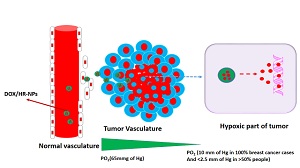
Zaheer Ahmad
Chinese Academy of Sciences, China
Title: Hypoxia-responsive methoxy poly (ethylene glycol)-block-poly (glutamic acid)-graft-6-(2-nitroimidazole) hexyl amine nanoparticles for doxorubicin drug delivery
Biography
Biography: Zaheer Ahmad
Abstract
Tumor micro environment-targeted nano drug delivery vehicles are gaining mounting attention in the field of biomedical sciences. The hypoxic response of the tumorous cells due to very low partial pressure of oxygen (sometimes less than 2.5 mm of Hg) in the tumor tissues makes hypoxia responsive drug delivery system as the more appealing in cancer chemotherapy. Based on these considerations, we synthesized hypoxia responsive polymeric materials methoxy poly(ethylene glycol)-block-poly(glutamic acid)-graft-6-(2-nitroimidazole) hexyl amine (mPEG-b-PLG-g-NID) by conjugation of the hydrophobic nitroimidazole derivative (NID) [6-(2-nitroimidazole) hexyl amine] with the pendant carboxylic group of poly(ethylene glycol)-block-poly(L-glutamic acid) (mPEG-b-PLG). The structure and degree of substitution were confirmed by proton NMR, FTIR and UV-Vis spectroscopy. The degree of substitution was found to enhance with the increase in nitroimidazole derivative to polymer ratio. The hypoxia response of the material was evaluated by UV-Vis spectroscopy and zeta potential measurements. Doxorubicin was hydrophobically encapsulated in the micellar core of the hypoxia responsive nanoparticles. The drug loaded micelles showed faster release in hypoxic condition as compared to normoxic conditions. Moreover, the developed polymeric system was found non-toxic to MCF-7 cell line thus suggesting its biocompatibility and suitability as drug delivery device.


